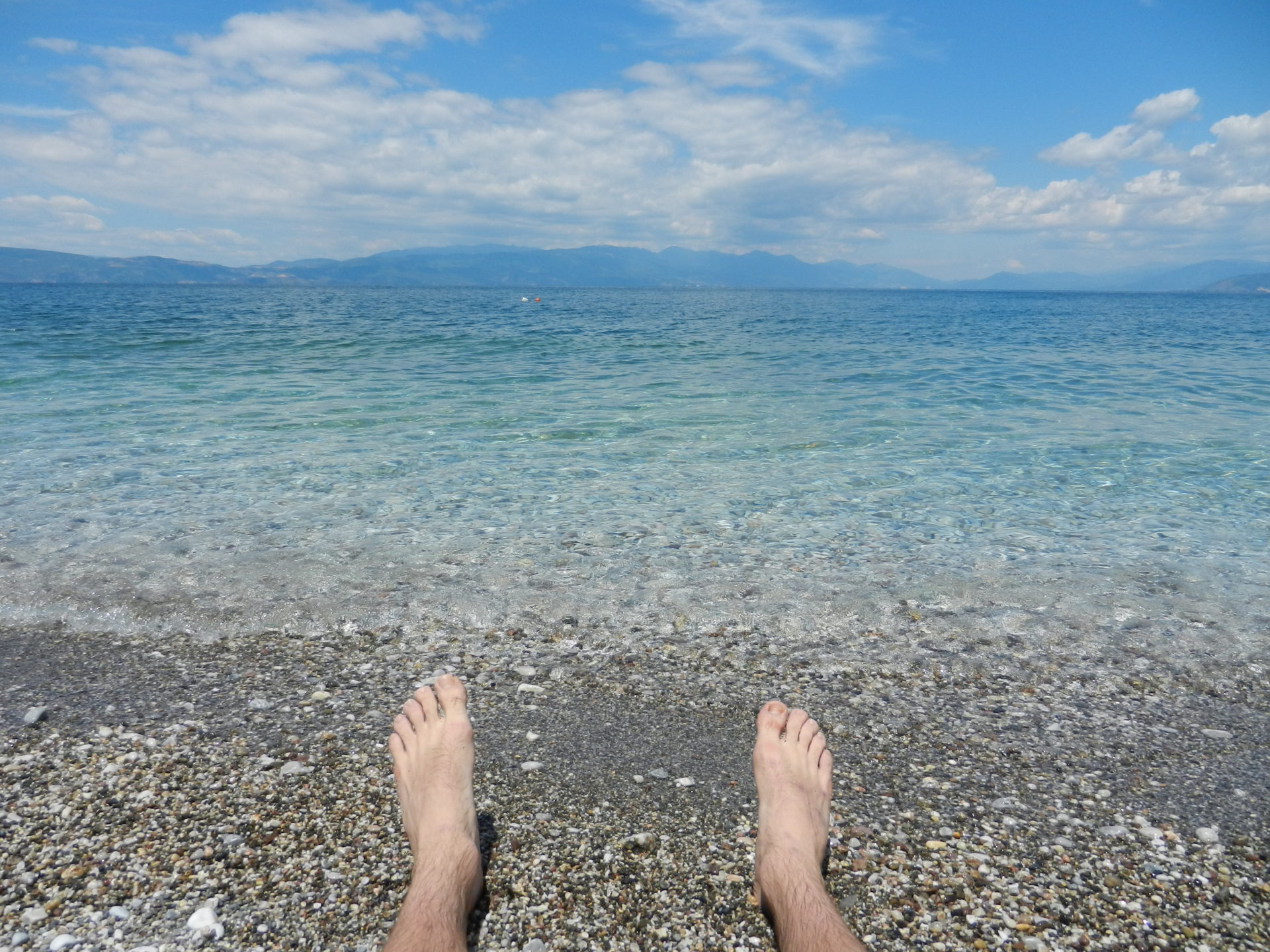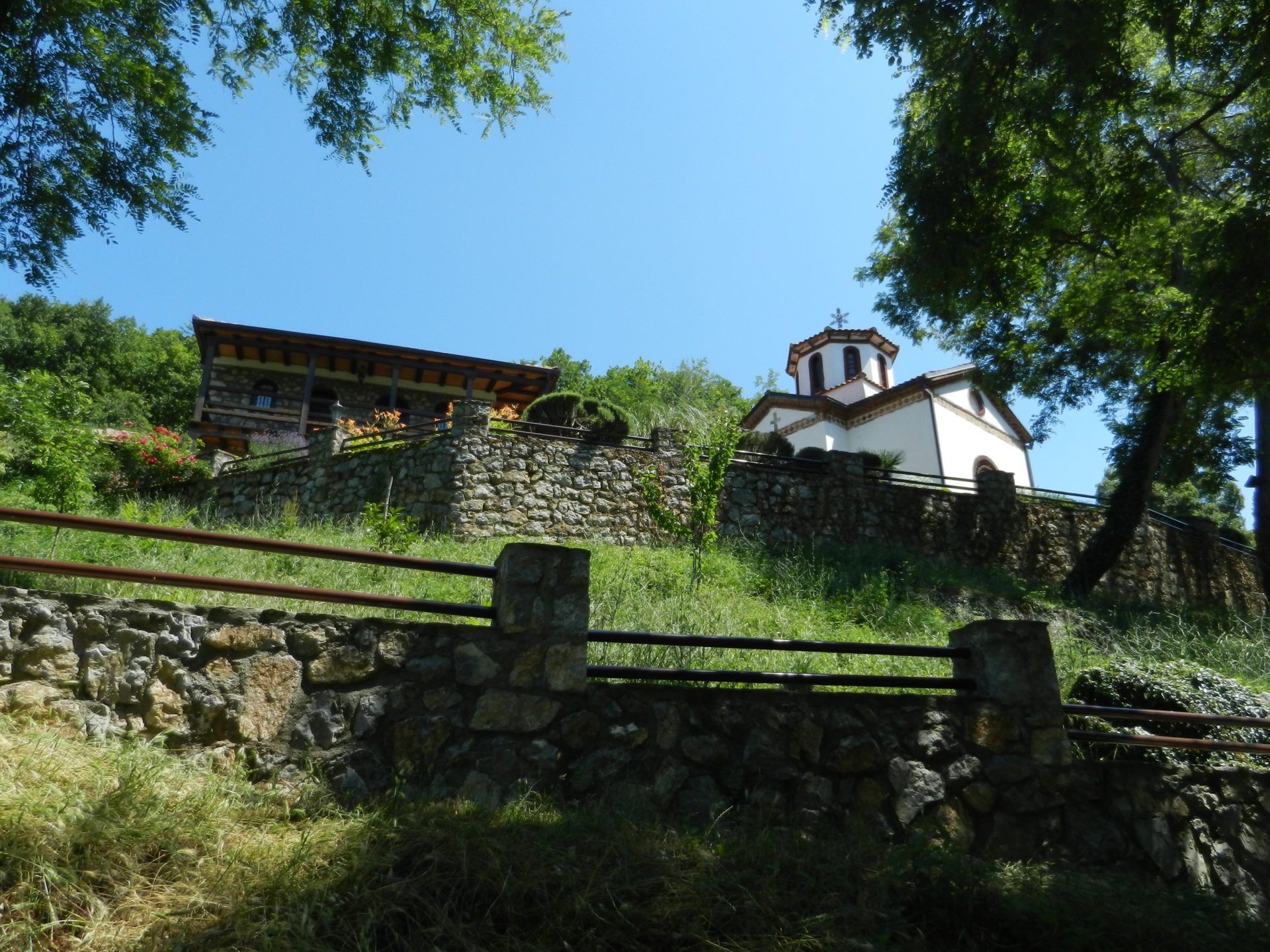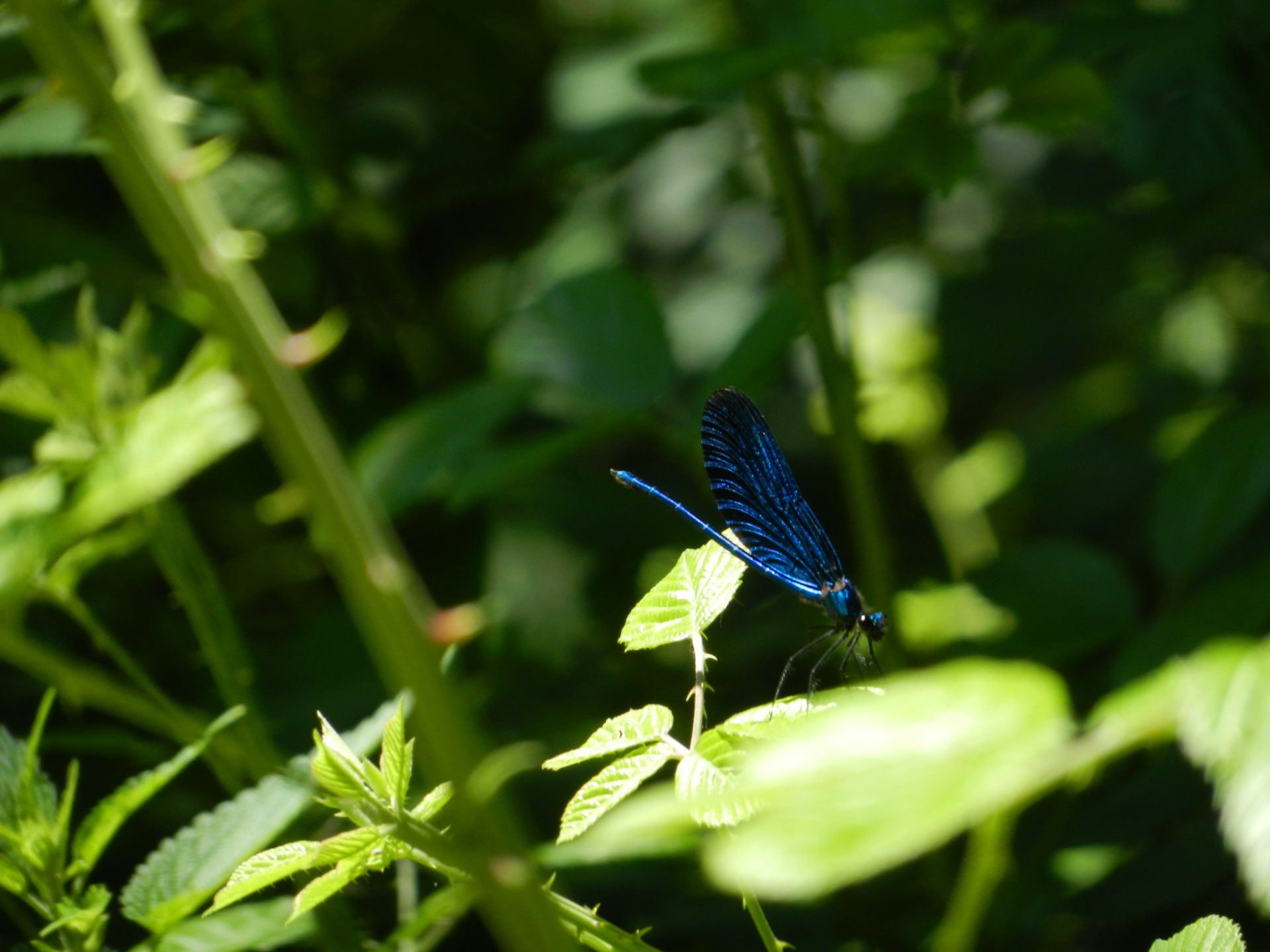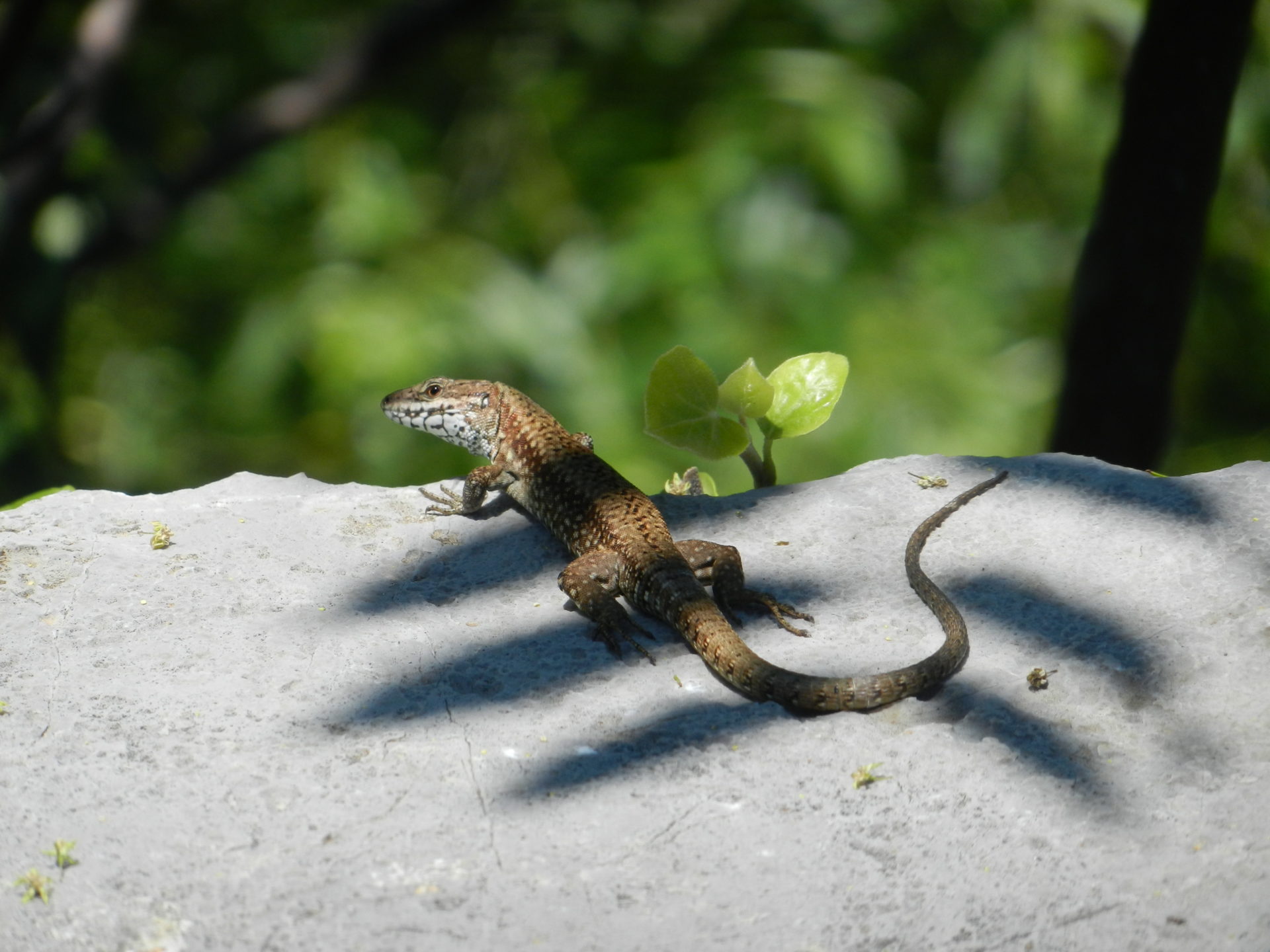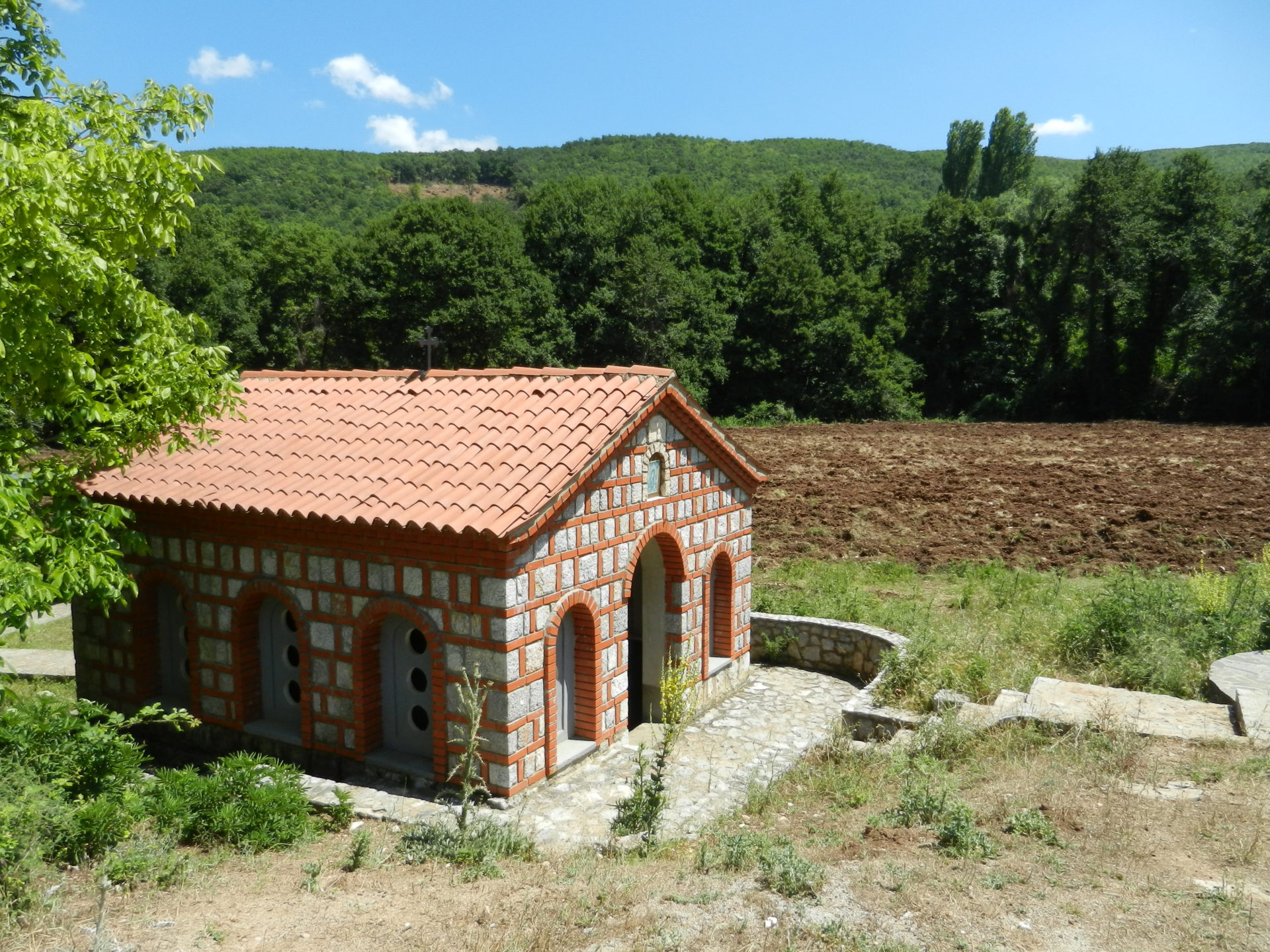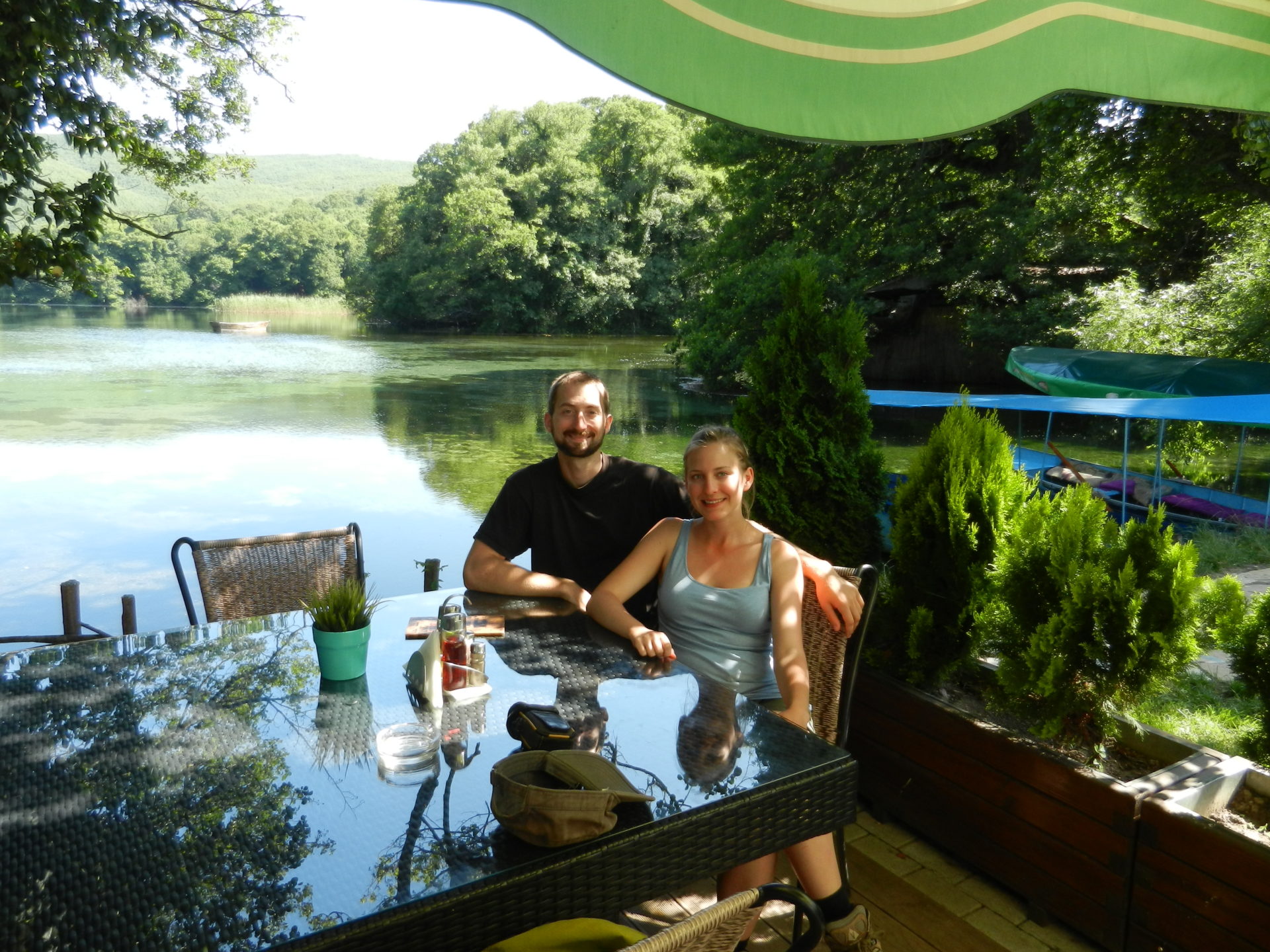
After bit of an adventure leaving Albania on buses and taxis, we arrived in Macedonia late that evening. Although the peak tourist season hadn’t started yet, it was a warm, summer night and the streets were lively. We had booked an Airbnb apartment just outside of Ohrid and were looking forward to a beautiful, lakeside vacation! Our host had kindly agreed to pick us up downtown and a short drive later we were settling into our little apartment for the next couple weeks.
Ohrid, A city on the lake

Streets of Ohrid, Macedonia. 
Mosque Hadzhi Torgut in Ohrid,Macedonia. 
Ali Pasha Mosque in Ohrid, Macedonia. 
Nathanael with an bag o’ fruit on the beautiful waters of Lake Ohrid.
This was the perfect time of year to be visiting, in my opinion! The weather was beautiful, stores and streets were starting to bustle, and the tourism madness was still a month away. Ohrid has a little bit of everything you could hope for in an interesting vacation spot. The Ohrid region is recognized by UNESCO for its unique natural and cultural significance.
Lake Ohrid is one of the oldest and deepest lakes in Europe, it’s tectonic in origin and has existed for an estimated two to three million years! Given how ancient the lake is, it’s maybe unsurprising that it’s home to over 200 endemic and relict freshwater species of plants and animals.
The town of Ohrid sits on the edge of the lake and is one of the oldest human settlements in Europe. The Ohrid region is home to old Slavic monasteries, hundreds of Byzantine-style icons, early Christian basilicas, ancient archaeological sites, and so much more. To top it all off, it has plenty of beautiful beaches and camping spots to enjoy!
explore ohrids unique history

Samuel’s Fortress. 
Samuel’s Fortress. 
Nathanael at Samuel’s Fortress. 
Samuel’s Fortress.
A great place for incredible views of both the lake and town of Ohrid is Samuel’s Fortress. The fortress was home to Tsar Samuel when Ohrid was the capital of Macedonia at the turn of the 10th century, but recent excavations suggest that the surviving structure was built over even older foundations (dated to 4th century BC!). After gallivanting along the fortified walls, take one of the walking trails on the hillside through the nearby park. You will find your way towards the Church of Saints Clement and Panteleimon and then the Church of St. John at Kaneo.

Nathanael and Church of St. John at Kaneo. 
Church of Saints Clement and Panteleimon.
The Church of Saints Clement and Panteleimon is a Byzantine church attributed to Saint Clement of Ohrid. Saint Clement is often associated with bringing the Glagolitic script to the First Bulgarian Empire, and in fact archaeologists think that this may be the site where the first students of the Glagolitic alphabet were taught! A little further down the hill you will arrive at the Church of St. John at Kaneo and treated to a pretty spectacular cliffside view of Lake Ohrid.

Church of Saint Sophia. 
Nathanael in the Amphitheatre in Ohrid. 
Holy Mother of God Peribleptos Church. 
Ottoman-style homes in Ohrid
Wandering through the town of Ohrid you will be treated to something interesting at every turn. As I mentioned, the town is one of the oldest settlements in Europe and inhabitants spanning various centuries, religions, and backgrounds have left a cultural mosaic behind.
The classical amphitheatre dates back to around 200 BC and today is used as a modern performance venue. Lovely, Ottoman-style homes (including the historical Robevi family house) pepper the city streets and the waterfront walkways make for a perfect afternoon walk by the water. The town itself was very easy to explore on foot, but there are plenty of boats and buses if you would like to expand your exploration.
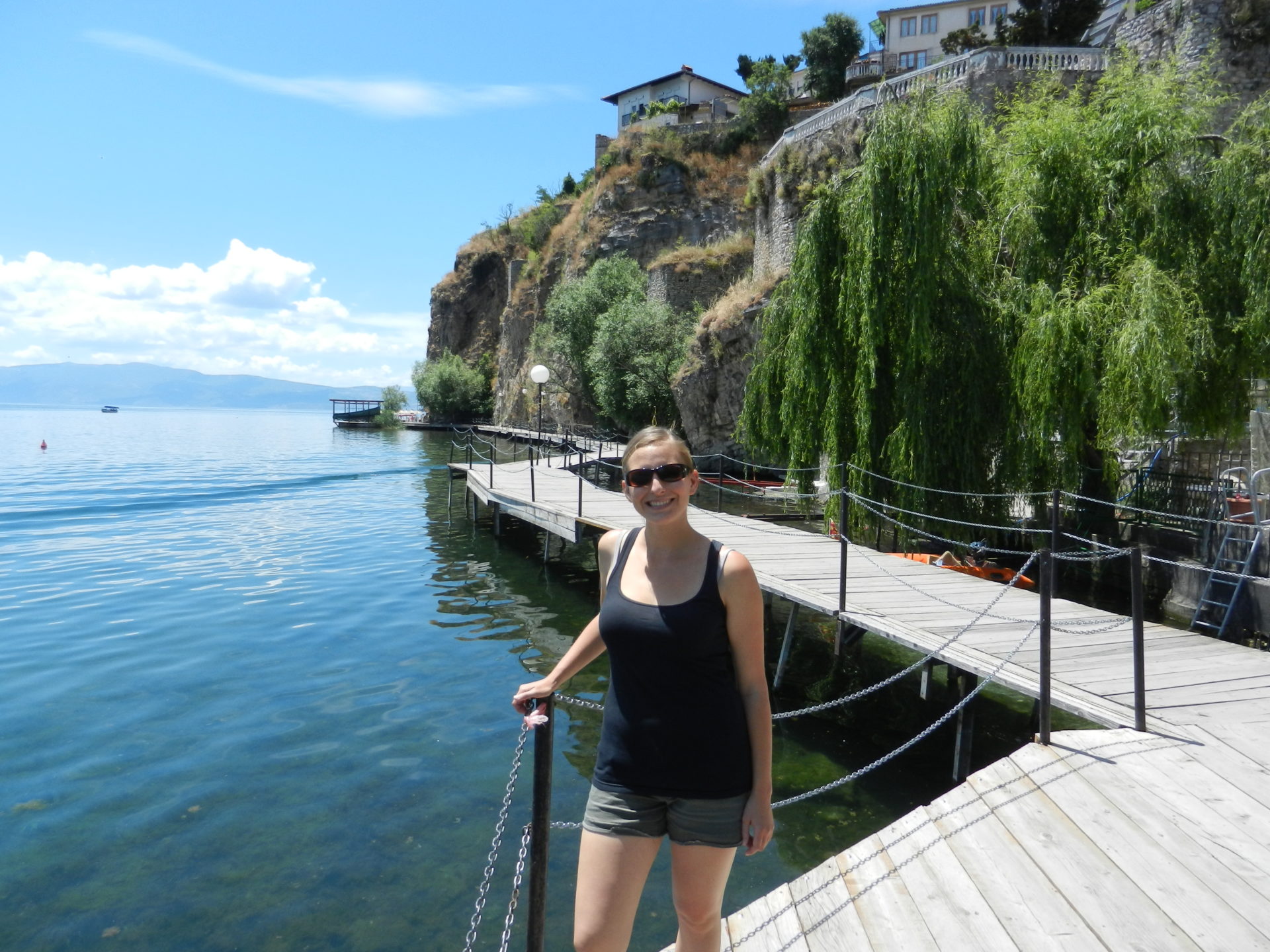
St. Naum Monastery

St. Naum Monastery is a short drive away from Ohrid and I would argue it’s a must-see when visiting the area. We opted to take the local bus to the monastery, which was easy to find and very affordable, but taxis and boats are also readily available to take you from Ohrid.
The original monastery was established in 905 by Saint Naum of Ohrid himself, and in fact his body rests inside the monastery today. There is a local legend that if you listen at his tomb you can hear his heart beating (though maybe that’s the sound of water from the lake below 😉 ). After being dismantled in the 11th and 13th century, the structure we see today was rebuilt in the 16th century. The complex, gardens, and nearby beaches are all well-worth exploring. You may even spot the local peacocks lounging around!

A peacock on the roof of St. Naum Monastery. 
Ashleigh infront of St. Naum Monastery.
The area surrounding the monastery is known as “the springs”, a lovely natural area with trails, pockets of water, local churches, and wildlife. After enjoying the monastery we opted to take a walk on some of the nearby trails and we certainly weren’t disappointed! You can actually take boats through the springs as well and be completely surrounded by multi-hued water and forest.
The Bay of Bones
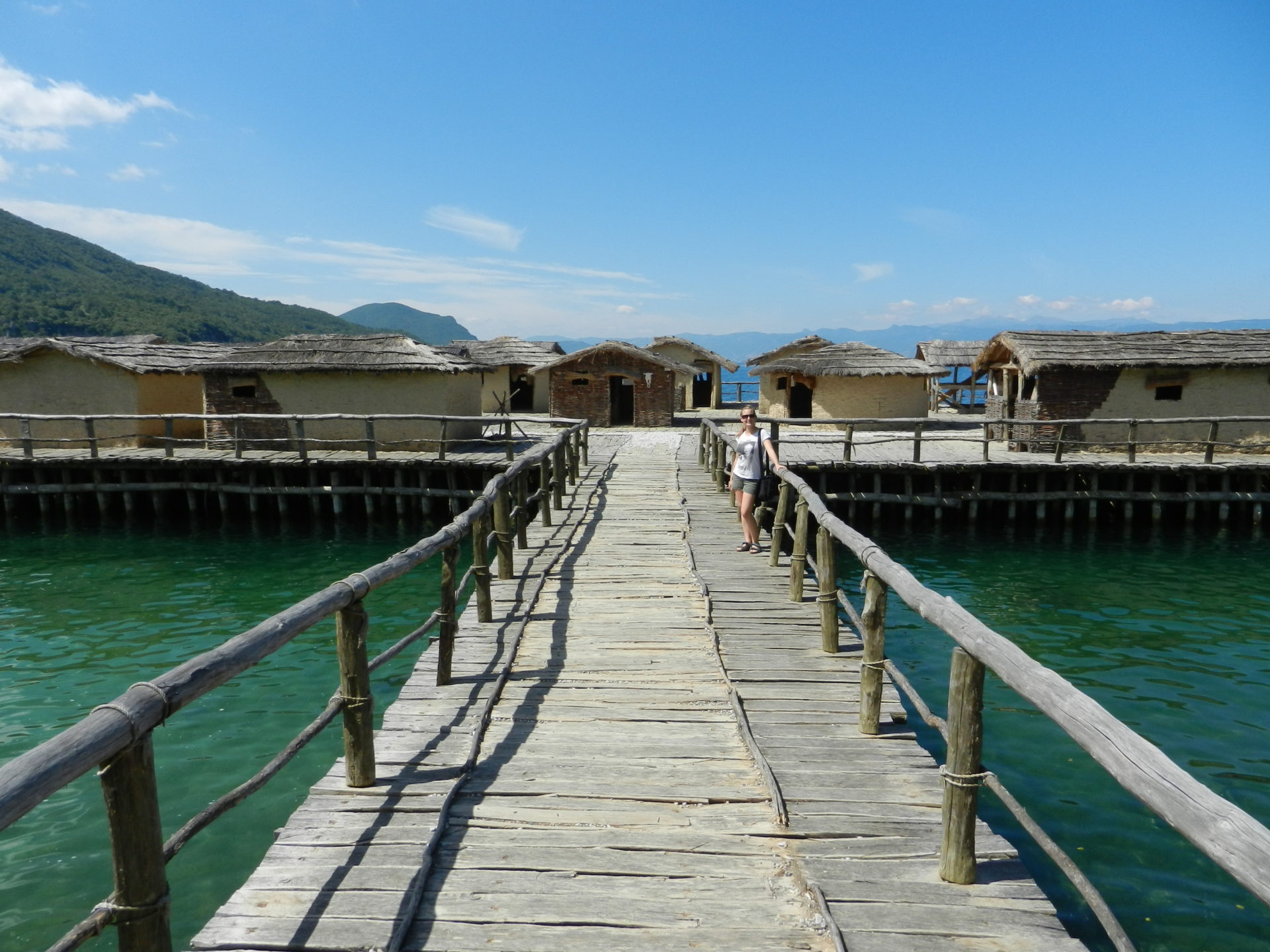
Another day adventure from Ohrid took us to the Bay of Bones, a museum near the town of Gradishte. An even shorter bus (or taxi) ride from Ohrid, is a unique museum on the water showcasing a piece of the Ohrid region’s prehistory. Archaeologists discovered the remains of an ancient settlement (possibly Late Bronze to Early Iron Age in origin) featuring the remains of 6000 wooden piles, likely supporting a platform with about twenty wooden huts. The museum on the water is a fascinating complex featuring a re-construction of the settlement, a nearby Roman castrum, a museum with artifacts, and even a facility for underwater tourism if you would like to explore the remnants of the original site, now underwater! This museum was a huge highlight for both us and we would highly recommend a visit.

Prehistoric hut near Gradishte. 
Gradishte, Macedonia. 
Ashleigh at Gradishte. 
Nathanael at Gradishte prehistoric settlement.
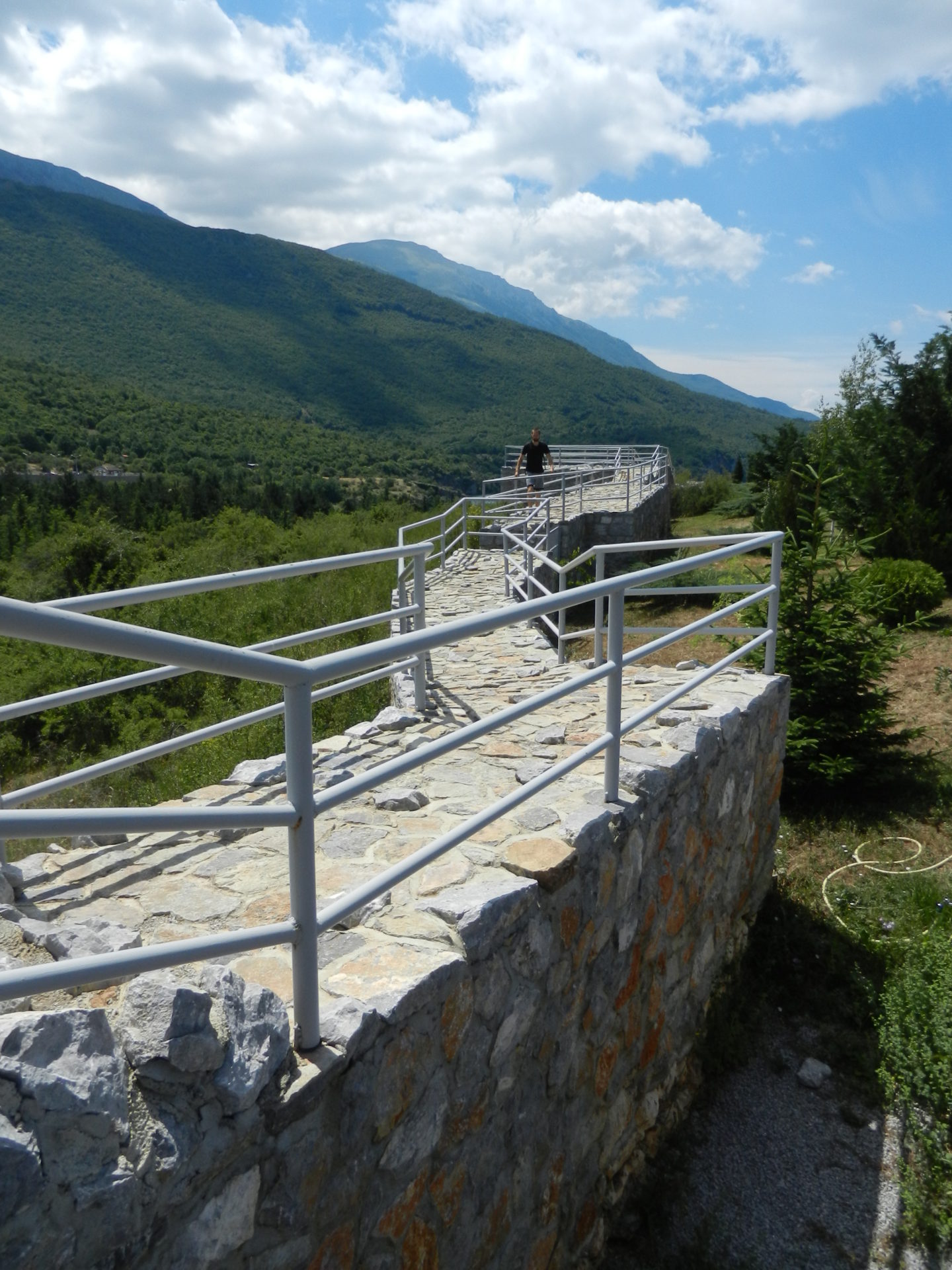
Lake Ohrid
Cultural and historical charms aside, the Lake Ohrid region has something to offer every kind of traveler. We spent about two weeks in the region and when we weren’t exploring the town of Ohrid or nearby archaeological sites we loved simply lying on the beaches, walking on nearby trails, or exploring local villages. If you find your way to Macedonia make sure you give yourself a generous amount of time to spend in this lovely region. You certainly won’t be disappointed!

The beauty of Lake Ohrid in Macedonia. 
Old chapel in Ohrid, Macedonia.
